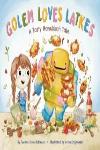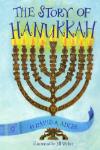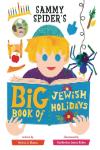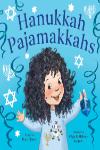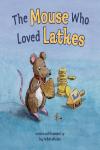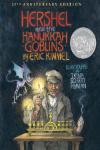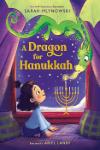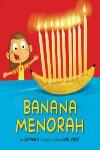Hoffman: The Kabbalah Deck (2000)
Edward Hoffman‘s intentions with his box containing “The Kabbalah Deck: Pathway to the Soul” were evinced on page 4 of 160 page booklet:
“I’ve increasingly felt the need for an entirely new resource – one that would make the Kabbalah more dynamically personal and interactive. This format would certainly not replace the classic study of the Kabbalah, but significantly complement it by providing a more experiential pathway into the proverbial “garden” of Jewish mystical guidance. To this end, I’ve created the Kabbalah Deck. It’s been designed for two specific and unrelated purposes. The first is for contemplation and sacred study, and the second is for divination.”
 As you can conclude from the above the Deck consists of cards, 35 by number and a booklet in a nice blue box. The back of the cards al gold colored, with black print on them using Middle eastern motifs, a Magen David (six pointed star) with an eye at its center and two fish at the shorter end of the cards. The fronts of the cards fall into one of three categories, but all of them are mostly white with minimal golden prints on them. The cards corresponding to the 22 letters of the Hebrew Alephbet have the letter’s English version on top in all lower case, the Hebrew version as you’d see them in the Torah scroll with their crowns in the center of the card. At the bottom of these and the three “Jolly joker” cards there is a line of barely visible six pointed stars as watermarks. The function of the three cards that simply have hamsa on them is to be used as any letter the user wants them to be, when spelling out something. This might be necessary if a word has a specific letter more than once in it. There are also ten cards, for each of the sephirot in the Tree of life. Each of these cards have the whole traditional chart of the Tree with one highlighted. Below the tree you will find the Hebrew and English name of the specific sephira.
As you can conclude from the above the Deck consists of cards, 35 by number and a booklet in a nice blue box. The back of the cards al gold colored, with black print on them using Middle eastern motifs, a Magen David (six pointed star) with an eye at its center and two fish at the shorter end of the cards. The fronts of the cards fall into one of three categories, but all of them are mostly white with minimal golden prints on them. The cards corresponding to the 22 letters of the Hebrew Alephbet have the letter’s English version on top in all lower case, the Hebrew version as you’d see them in the Torah scroll with their crowns in the center of the card. At the bottom of these and the three “Jolly joker” cards there is a line of barely visible six pointed stars as watermarks. The function of the three cards that simply have hamsa on them is to be used as any letter the user wants them to be, when spelling out something. This might be necessary if a word has a specific letter more than once in it. There are also ten cards, for each of the sephirot in the Tree of life. Each of these cards have the whole traditional chart of the Tree with one highlighted. Below the tree you will find the Hebrew and English name of the specific sephira.
The accompanying booklet has three major and several minor sections. After the acknowledgements and the introduction you find a seven page mini-essay on the wisdom of the Hebrew alephbet. About half of this is devoted to explaining how Abraham Abulafia’s repurposed it, but it also covers such roots of the topic as Ezra the Scribe, the Sefer Yetzirah and the Zohar. Then each of the letters get a two page treatment with 4-5 paragraphs each. These paragraphs explain the significance of the letter in Kabbalah. It is a great overview of the topic, although it never sites its sources fully. Often it talks about Kabbalah in general and sometimes he mentions that this particular explanation or that comes from the Zohar or from a Hassidic master. This kind of writing is in alignment with the intention I quoted above, but is not with my scientific or religious interest as both of these would want me to follow the sources and find out the original writings Hoffman incorporated. Nevertheless the content is truly remarkable. The last paragraph of each of these mini-chapters is about the purpose and method on how to meditate on that particular letter.
The second major section is about the Ten Sephirot. It follows the same patter of an opening 5-page mini-essay on their history and then two page of each of them. The last major section is titled “exercises for meditation and divination.” None of the twenty five exercises is longer than 14 lines. Some of them fall along the lines of team, family or trust building, but most of them are for introspection. As Hoffman is a clinical psychologist I am sure he harvested his knowledge of that field to combine it with Jewish mysticism to create something new. The exercises often include shuffling the cards and picking one. Then the deeper meaning of that card is the answer for the question you were supposed to focus on. It presumes of course that you are fully familiar with the meanings of the cards, the letters and the sephirot. The booklet will give you a good start to acquire the knowledge but it will not fulfill all the needs.
Hoffman’s book is full tiny nuggets of knowledge that are valuable I themselves for people interested in the connection of Kabbalah, psychology and (I am afraid I have to add) divination. He exposed the connection between the first two in one of his dozen books titled, “The Way of Splendor: Jewish mysticism and modern psychology.” The Kabbalah Deck is a splendid package for those who want to follow the divination path. Meanwhile I will go back and read his book instead.
The book at the publisher’s site (Chronicle Books)

